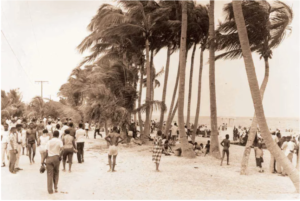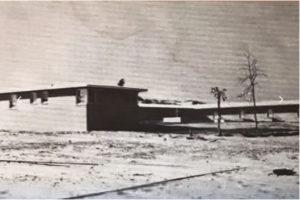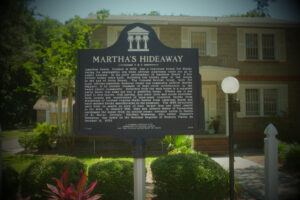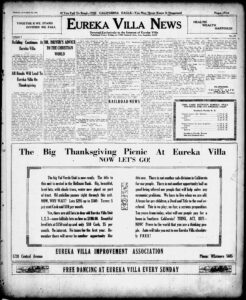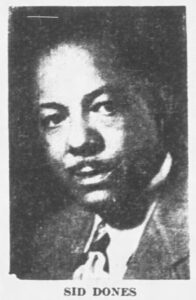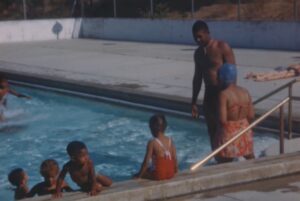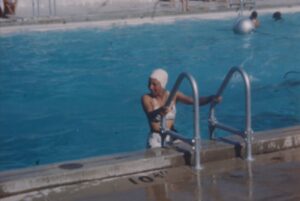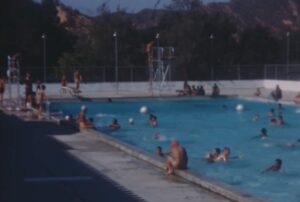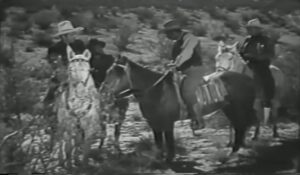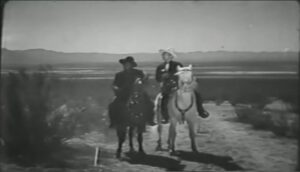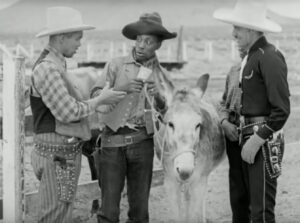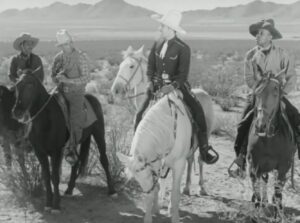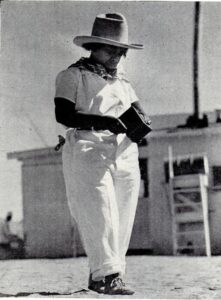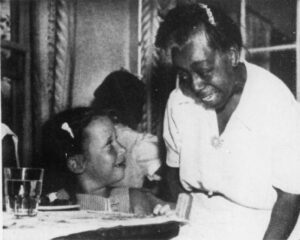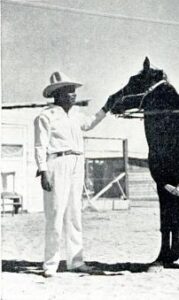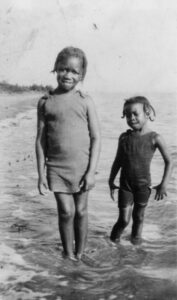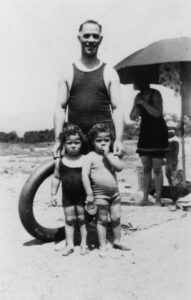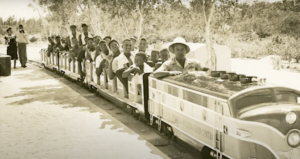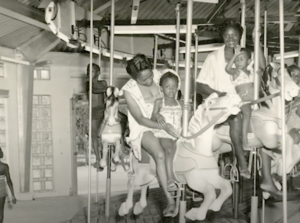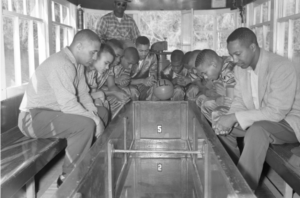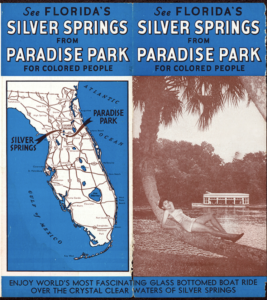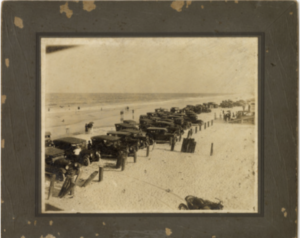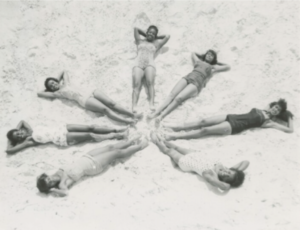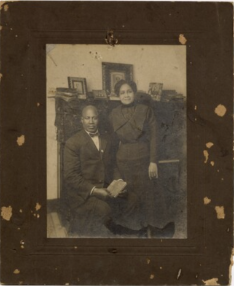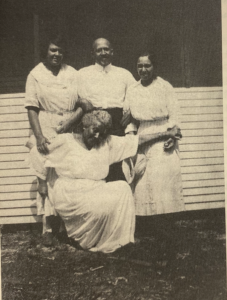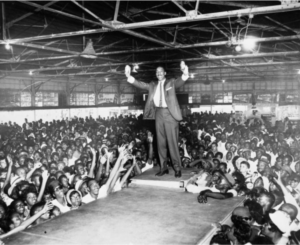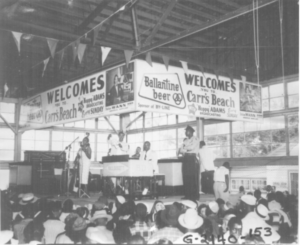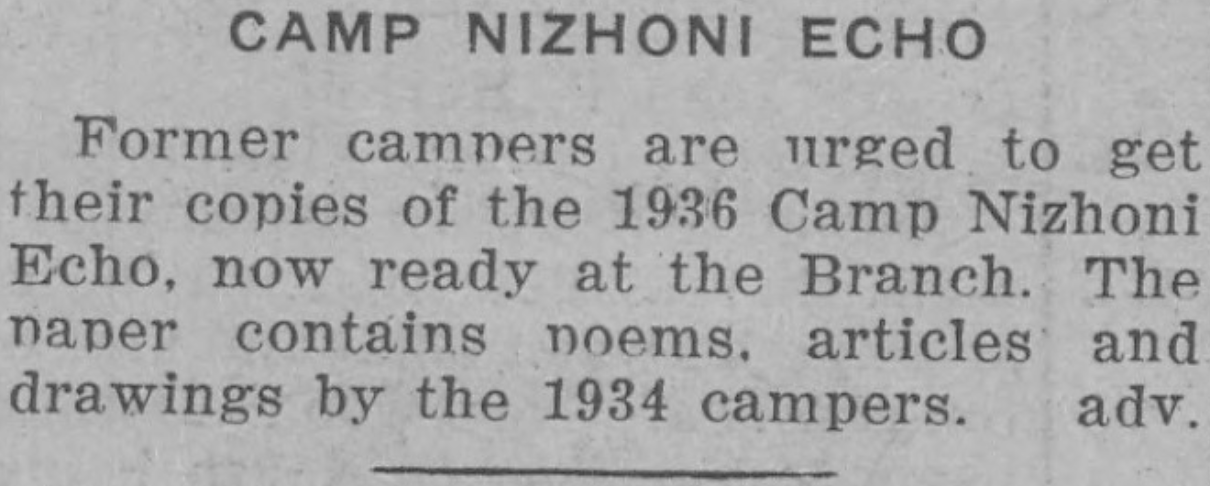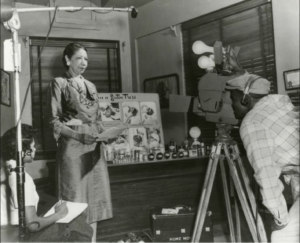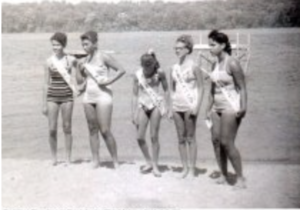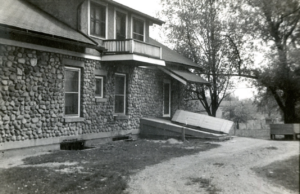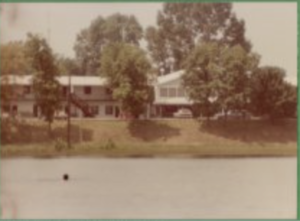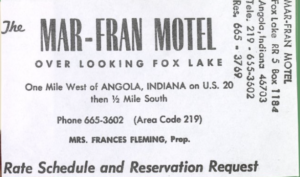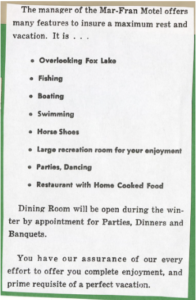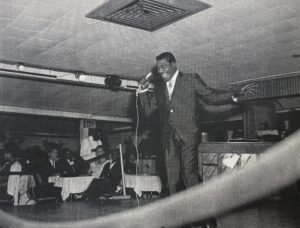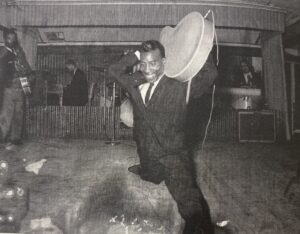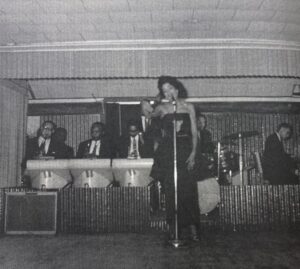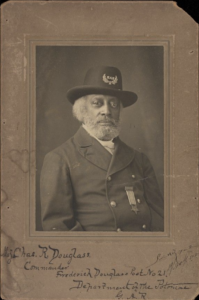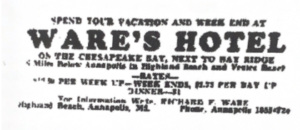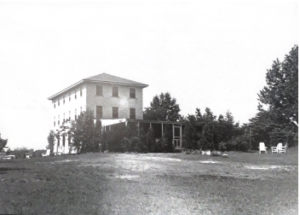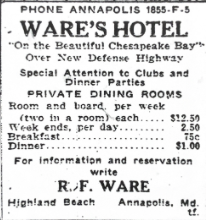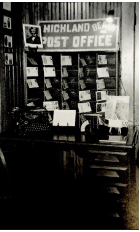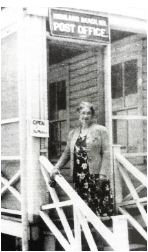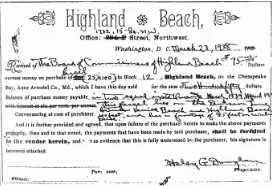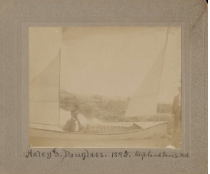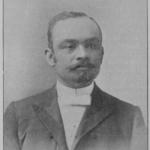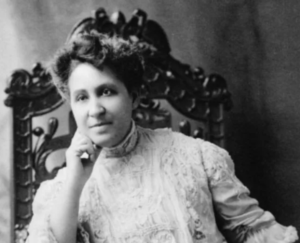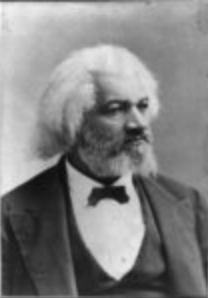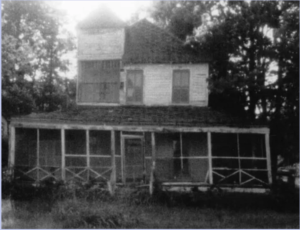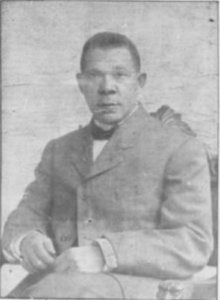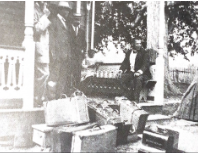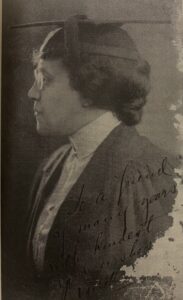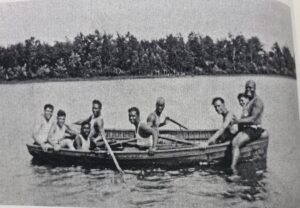
Chicken Bone Beach, New Jersey
Chicken Bone Beach was a segregated beach in the resort town of Atlantic City, New Jersey, during the turn of the 20th century. Black folks of diverse classes would travel to Atlantic City from all over the country, seeking a pleasant vacation spot for their families. The beach was situated at the foot of Missouri Avenue, and although not visibly segregated via signs, it was a Black-only beach location from around the years 1900 to 1964. The beach became known as “Chicken Bone Beach” as a result of patrons and workers regularly coming across chicken bones strewn across the shoreline. These bones were from Black families who brought their own food, notably fried chicken, to the beach as they were not welcome at many restaurants nearby. Despite the nature of Jim Crow during the time, patrons of the beach described it as having a “Hollywood-ness” quality and referred to it as “the place to be.”1
Chicken Bone Beach was popular throughout the summer months, drawing in a large portion of Atlantic City’s 1,200 Black visitors on a given day.3 It was particularly busy on the Easter and Independence Day holidays. In addition to sunbathing and swimming on the beach, Black-friendly facilities, amenities, and leisure activities were offered around the city. In the late 1920s, the Atlantic City Board of Trade was formed by Black community leaders in order to promote Black businesses. The Board of Trade made tremendous efforts to promote services and advertise vacation packages to provide Black businesses with the best and most consistent patrons possible. Their work contributed largely to the popularity and development of Black-owned businesses in Atlantic City. Many of these businesses were situated along Arctic Avenue, such as the only two Black-owned hotels in the city: Wright’s Hotel and Hotel Ridley. In addition to great places to stay, vacationers visiting Chicken Bone Beach could explore the beach along the boardwalk and the piers, as well as enjoy nightlife in the city. Triweekly, families could see Black performers competing in cakewalks at Steel Pier and occasionally Young’s Pier. After long days on the beach and boardwalk, Black folks also frequented Club Harlem in the city, a Black-owned nightclub that featured music and comedy shows.
These leisure activities and enterprises were committed to offering Black families safe places, a means to escape the oppressive burdens imposed by the era of Jim Crow. Black community leaders in the resort town of Atlantic City sustained a strong sense of community service, allowing Chicken Bone Beach and other spaces in the city the opportunity to flourish and act as a space of rest and leisure.
Excerpt of interview with Dr. James Butler2
1 “A History Discovered: Chicken Bone Beach,” State News Service, August 5, 2016.
2 Dr. James Butler, interview by Dr. Elizabeth Patton, April 25, 2023.
3 Newsome, Clifford J. “GENERAL HISTORY OF THE ATLANTIC CITY BOARD OF TRADE, INC.” Negro History Bulletin 16, no. 2 (1952): 27–30. http://www.jstor.org/stable/44214491
Brian E. Alnutt, “‘The Negro Excursions’: Recreational Outings among Philadelphia African Americans, 1876-1926,” The Pennsylvania Magazine of History and Biography 129, no. 1 (2005): 73–104, http://www.jstor.org/stable/20093765
“Club Harlem Collection Collection.” Atlantic City Free Public Library. https://t4b308767a0199fbe.starter1ua.preservica.com/portal/en-US/collection/sdb%3ASO%7Cc25ed812-4645-4381-8535-203329cb35d9
“Community Report No. XIV: Atlantic City from Survey of Negro Life in New Jersey: Community Reports 1932 Volume III South Jersey.” Rutgers University Community Repository. New Brunswick, November 29, 2005.
“PROGRESS IN ATLANTIC CITY.” Negro History Bulletin 16, no. 2 (1952): 26–38. http://www.jstor.org/stable/44214490
Stephens, Ronald J. “Chicken Bone Beach, Atlantic City, New Jersey (1900- ).” Black Past, October 17, 2019. https://www.blackpast.org/african-american-history/chicken-bone-beach-atlantic-city-new-jersey-1900/
List of Images
- Cover Photo: Black and white aerial photo of Steel Pier and Auditorium Pier. https://rivertonhistory.com/images/atlantic-city-images/#jp-carousel-6163
- Map Thumbnail – Chicken Bone Beach: A black and white photo of Martin Luther King Jr. and another man posing on the beach for a woman with a camera. https://digital.library.temple.edu/digital/collection/p15037coll17/id/276/rec/1
- Map Thumbnail – Young’s Pier: A black and white photo of cakewalk competitors dressed nicely on the pier. Text printed on the photo reads: The Cake Walkers – Young’s Pier. Atlantic City, U.S.A. https://www.si.edu/object/archives/components/sova-nmah-ac-0281-ref519
- Map Thumbnail – Steel Pier: A cakewalk competition advertisement featuring a drawing of two Black competitors. The text reads: IF YOU WANT TO SEE A REAL CAKE WALK YOU MUST GO TO THE STEEL PIER MONDAY, WEDNESDAY AND SATURDAY EVENINGS, 9 O’CLOCK BALLROOM. https://digitalcollections.nypl.org/items/8f33a1f8-ee3c-14bd-e040-e00a180638be
- Map Thumbnail – Morris Guards Armory: A black and white panoramic photo of the Soap Box Minstrel, a large comedy revue troupe. Performers at the ends of the group are holding signs that read “Tonight Soapbox Minstrels of the Citizen’s Republican Club of Phila. Morris Guards Armory. 9 PM.” https://digital.library.emory.edu/catalog/6042rbnztr-cor
- Map Thumbnail – Club Harlem: A black and white photograph of a performance by Harold Melvin & the Blue Notes on stage at Club Harlem. There is a full band visible behind them and audience members sitting at tables in front of them. https://www.si.edu/object/photographic-print-performance-melvin-harris-and-blue-notes:nmaahc_2011.145.7
- Map Thumbnail – Wright’s Hotel: A black and white photo of a printed advertisement for Wright’s Hotel in the 1936 Atlantic City Board of Trade business directory. The picture in the advertisement displays a hotel room with two beds, a side table, and a mirror. The text reads: WRIGHT’S HOTEL S.D. WRIGHT, Prop. No. 1702 ARCTIC AVENUE — PUBLIC PHONE 5-9993. https://t4b308767a0199fbe.starter1ua.preservica.com/portal/en-US/asset/sdb%3AIO%7Cb9375b7f-f754-4e36-8a9f-ebc6bf50cddc (Courtesy of Atlantic City Heritage Collections, Atlantic City Free Public Library)
- Map Thumbnail – Hotel Ridley: A black and white photo of a printed advertisement for Hotel Ridley in the 1936 Atlantic City Board of Trade business directory. The picture in the advertisement features the exterior of Hotel Ridley, which is two separate buildings, the left building shorter than the right building. The text reads: Open All the Year American & European Plan HOTEL RIDLEY M. A. RIDLEY 1804-1806 ARCTIC AVENUE Phone 5-9034. https://t4b308767a0199fbe.starter1ua.preservica.com/portal/en-US/asset/sdb%3AIO%7Cb9375b7f-f754-4e36-8a9f-ebc6bf50cddc (Courtesy of Atlantic City Heritage Collections, Atlantic City Free Public Library)
- Map Thumbnail – Newsome’s Cottage: A black and white photo of a printed advertisement for Newsome’s Cottage in the 1947 Atlantic City Board of Trade business directory. The picture in the advertisement features the exterior of Newsome’s Cottage, which is a 4-story cottage with someone standing out front. The text reads: NEWSOME’S COTTAGE AND BEAUTY SALON ROOMS FOR VISITORS 225 N. Indiana Ave. Atlantic City, N.J. Mrs. C. J. Newsome, Prop. Phone 4-0843. https://t4b308767a0199fbe.starter1ua.preservica.com/portal/en-US/asset/sdb%3AIO%7Ca95eb655-c224-4656-ae95-1de946f2f24a (Courtesy of Atlantic City Heritage Collections, Atlantic City Free Public Library)
- Map Thumbnail – Liberty Hotel: A black and white photo of a printed advertisement for Liberty Hotel in the 1947 Atlantic City Board of Trade business directory. The picture in the advertisement features the exterior of the Liberty Hotel, which is a 5-story brick building with three flags flying from it. The text reads: LIBERTY HOTEL 1519-21-23 BALTIC AVENUE ATLANTIC CITY, N.J. PHONE 4-1184 OPEN ALL YEAR. https://t4b308767a0199fbe.starter1ua.preservica.com/portal/en-US/asset/sdb%3AIO%7Ca95eb655-c224-4656-ae95-1de946f2f24a (Courtesy of Atlantic City Heritage Collections, Atlantic City Free Public Library)
- Map of Atlantic City: Black and white map of Atlantic City created in 1920. https://maps.lib.utexas.edu/maps/historical/atlantic_city_nj_1920.jpg
- Outside Club Harlem: This photo in color displays an exterior view of Club Harlem and its sign. https://t4b308767a0199fbe.starter1ua.preservica.com/portal/en-US/asset/sdb%3AIO%7Cf598c940-ce47-403f-835d-abb6f6e31485
- Woman on the Beach: Black and white photo of a woman posing on the beach in shallow water. https://digital.library.temple.edu/digital/collection/p15037coll17/id/949/rec/50
Map thumbnail photos descriptions can be found at the bottom of the page

“During the Easter holiday of 1926, the boardwalk was remarkabl[y] crowded with black visitors: ‘colored Philadelphia moved to Atlantic City last Sunday,’ reported the Tribune…”
-The Pennsylvania Magazine of History and Biography, 2005

“The beach had its own ‘Hollywood-ness,’ it was important to make a fashion statement.”
-State News Service, 2016




